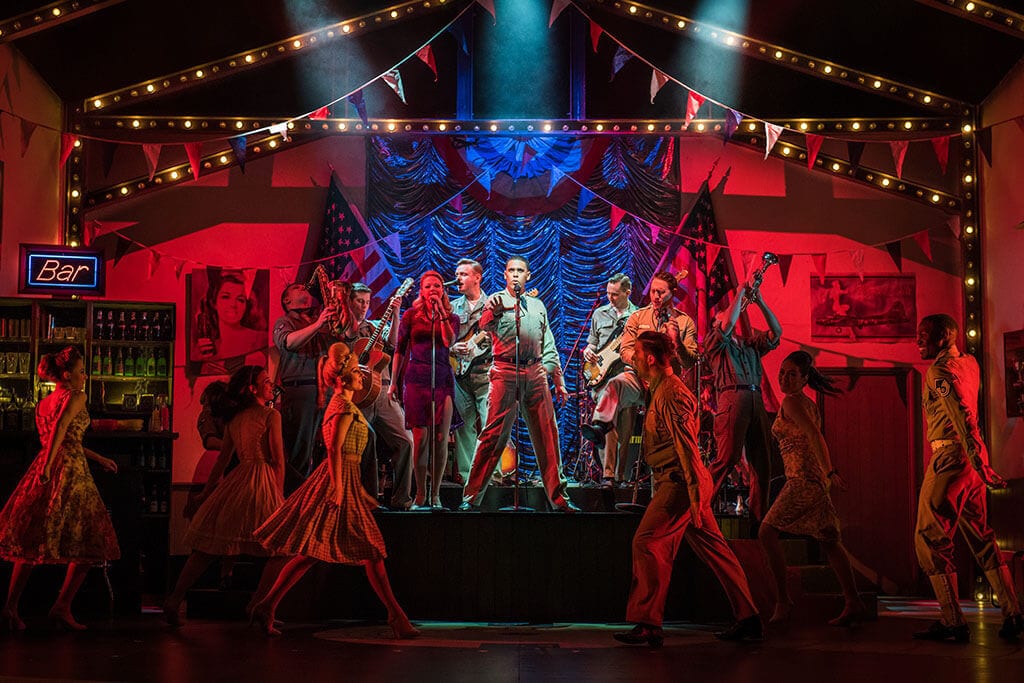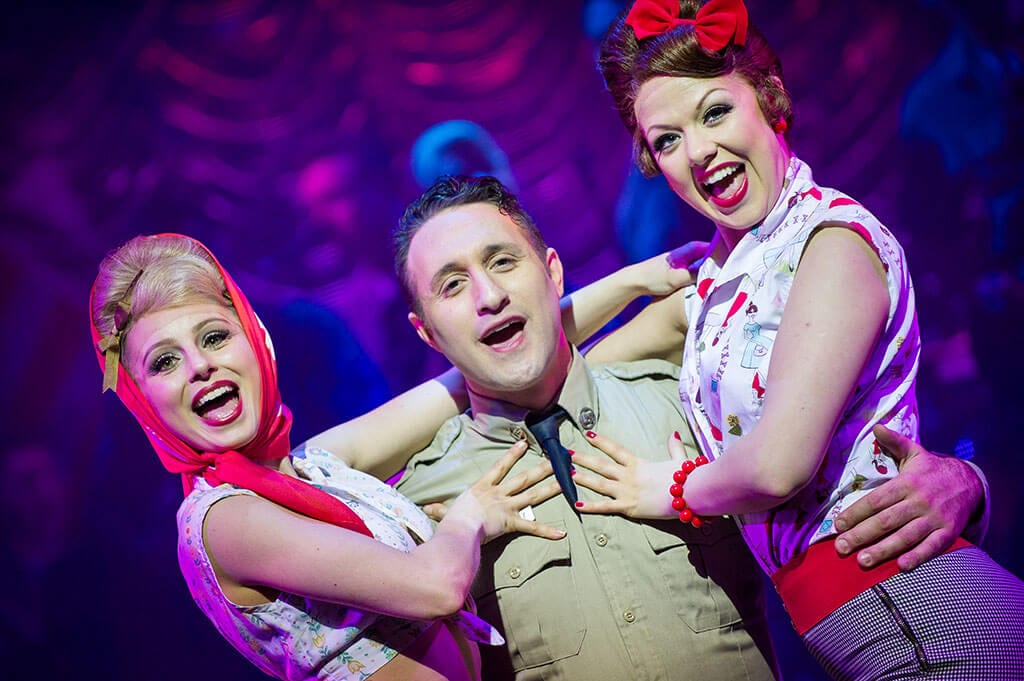So here’s the problem. Compilation musicals based on songs of an earlier era are as old as Talking Films. On stage more recently we have had several of these based on songs of the sixties or seventies, based on the songs of Queen or Michael Jackson or whatever; and these shows are something that most serious “critics” sneer at almost reflexively. This is because, they claim, such musicals do not move the genres of music theatre forward.
But surely the point is that people are devising an entertainment based on the Nostalgia Principle and they are also simply putting on a show – just like Judy Garland and Mickey Rooney in all those old MGM musicals. It is principally about entertainment. They are putting on a show like the old MGM film Easter Parade, which devises a touching sentimental little story set in the era in which the songs they are using by Irving Berlin were written; the purpose is also to provide a showcase for the numbers and for the talents of Judy Garland, Fred Astaire and Ann Miller. Easter Parade, and for that matter Singin’ in the Rain, succeed because of the wit of the script, the enjoyable nature of the concept and the skilled performance of the actual music; as well as succeeding because of the brilliant talents of the performers themselves.
So I am here to tell you that Save the Last Dance for Me is one of the better examples of this sub-genre, the Compilation Musical, for all the reasons listed above. The song choices are spot on – my whole youth came flooding back to me song by song. The script, by Laurence Marks and Maurice Gran, is clever and engaging as well as being serviceable and undemanding. It is really easy to follow. The story is set in the 1960s and uses the music of Doc Pomus, Mort Shuman and many more; and the tale told deals with everything from seaside holidays to some of the class and race prejudices of the era, with which we are perhaps struggling again. The song choices are cleverly interwoven with the fairly predictable (but therefore comforting) and undemanding plot and characterizations. Sometimes the script just comes up with an excuse for a good rousing number; and sometimes the songs actually enhance and move forward the story or our understanding of the character in question. The set and costume design are appealing. The show is highly professional and even slick in every aspect.
Tickets are being sold on the publicity of having Antony Costa (of Blue) and Lola Saunders (of The X Factor 2014) in the cast. These two performers are very good. Lola Saunders is actually in her first show ever and she throws herself into her part, giving a good characterization and displaying a really good voice and dancing ability. She becomes part of the ensemble, as does Costa, quite frequently and seamlessly and both these performers and fully committed to every second they are one the stage. It will be interesting to see how they develop as musical comedy stars. The choreography of the show, by Bill Deamer, is witty and evocative of the era.
But be warned, Costa and Saunders actually have the second leads, they play the sidekicks, as it were. The real stars of the show are Wayne Robinson as Curtis and Elizabeth Carter as Marie. Both are superb. Carter conveys the personality of the 17-year-old ingénue with real charm – she evokes and portrays the kind of role that used to be done in MGM musicals by a young Debbie Reynolds or Jane Powell. She is convincing in every way; she is a talented singer and dancer and a charming actor.
But if you go for only one reason alone to see this show, it is for Wayne Robinson. He has star quality. He simply is the centre of the show and helps make the whole story convincing and, at times, genuinely moving. He knows how to point his more serious lines to emphasize the underlying concerns about racism and sexual promiscuity that are subtexts; he is a superbly talented singer and dancer, an exceptionally attractive personality; and he knows how to add a bit of grit to the evening. His rendering of songs such as Lonely Avenue and Can’t Get Used to Losing You are among the evening’s most moving moments. But if one is talking about talent on the stage, there is not a member of this highly efficient and co-ordinated, well-drilled ensemble that should go unmentioned. One also has to praise performers such as Sackie Osakonor as Rufus and and to enjoy the way some of the ensemble double their parts.
The production values are good – quite a lot better, in fact, than you often find in this kind of touring show. Bill Kenwright’s direction is totally praiseworthy. Mark Bailey has provided evocative and apt set and costume design.
But above all, the cast is superb. The stage is filled by performers who are young, energetic, and able to convey song by song a huge sense of pleasure in and understanding of the material they are performing for you. The audience – a large proportion of whom were oldies like myself reliving their youthful soundtrack – was enchanted and got up and danced at the end as the cast reprised song after song. The show itself is charming throughout; and the script, rather like an old Doris Day movie, points at the odd social problem for you to think about without actually exploring it with much depth.
If you go in expecting Rogers and Hammerstein or Lerner and Loewe or even Stephen Sondheim, or if you do not have a taste for this kind of music, you will sneer and be disappointed.
But if you go in expecting an evening of not-entirely mindless entertainment, put together with highly professional skill, performed by a very snappy and strong cast and with an excellent pit band on the stage playing superbly and having very fine orchestrations, you will have a lively evening out that will be a lot of fun. And you will also discover a very talented group of performers, among them the strikingly gifted Wayne Robinson.





